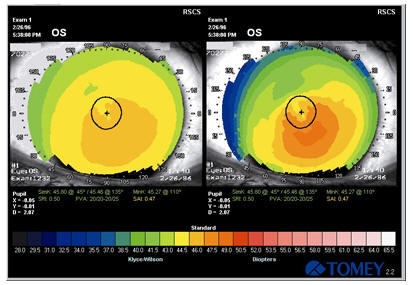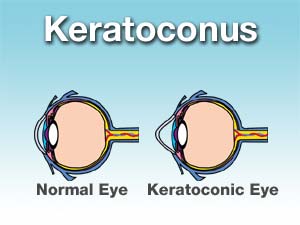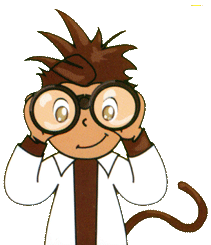Dr. Brian Yip & Associates offer a broad range of eyecare services, including:
| Examinations |
Comprehensive Eye Examination |
| |
Partial Eye Examination |
| |
|
| Contact Lenses |
Soft Contact Lens Fitting |
| |
RGP Contact Lens Fitting |
| |
Orthokeratology / Corneal Refractive Therapy |
| |
Keratoconus Management |
| |
|
| Ocular Health Assessments |
Dry Eye Testing |
| |
Glaucoma Screening |
| |
Diabetic Retinopathy |
| |
Low Vision Assessment |
| |
|
| Binocular Vision & Low Vision |
Vision Therapy |
| |
|
| Laser Vision Correction |
Lasik |
| |
Lesik |
| |
PRK |
Eye Examination
Our complete eye examination will include the following components, although variations may occur because of patient age, abilities, and general health and eye conditions:
-
a health history with emphasis on eyes and vision, including vision needs
-
measurement of visual acuity (for example 20/20)
-
measurement of refractive error (far-sightedness, astigmatism)
-
determination of the alignment of the eyes
-
determination of the way the eyes adjust focus from distance to near
-
examination of the eyes for disease or abnormalities
-
a diagnosis from the results of the examination
-
recommendations for any treatment required, which may include additional tests or referrals to another health care provider
-
provision of a prescription or treatment plan for vision correction if required
-
any counseling or advice that is necessary, including need for future vision care
As part of our professional evaluation of your eyes, we always includes a discussion of your individual visual needs and concerns. Your questions will be answered and all options are presented in order for you to be educated and in control of the care and maintenance of your visual system.
Eye Examination for Adults
Many people feel that if they see well, they don't need an eye exam. The truth is many eye diseases that eventually lead to vision impairment or blindness have no early symptoms to let you know something is wrong. Waiting for symptoms could mean irreversible loss of vision. There is no substitute for early detection and treatment of diseases such as glaucoma and diabetic retinopathy which have no early symptoms. So even if you see "20/20", you will benefit from a thorough eye exam every 12 to 18 months. Our adult eye exam covers your vision as well as your eye health. If problems are detected, early treatment may keep you seeing for the rest of your life. So, don't take chances with your eyes when 30 minutes of your time every year is all that is needed.
In addition to vision and eye health, we will also make recommendations regarding your eyecare needs pertaining to your vocational (work-related) and avocational (hobbies) requirements. If you have any specific visual requirements, please inform the doctor during your appointment.
Eye Exams for Children
Have you taken your child in for their first eye exam? Just as taking care of your children's teeth is important for proper growth and children's well-being, so too is taking care of your tiny tot's vision. Children eye exams are not anything to be worried about.
When To Take Your Child In For An Eye Exam
Children may start experiencing vision problems as early as preschool. In fact, some studies suggest up to 10% of preschoolers may have visual disturbances. The problem with this is most young children may have difficulty communicating any vision problems. For most, "not" seeing normal may seem normal, only because children do not know what to expect when it comes to their eyesight.
Most children will have an eye exam in school around kindergarten or first grade. The American Optometric Association however, suggests parents should take their children in for their first official eye exam by six months old. While that seems young, the earlier you start caring for your child's vision, the better.
Common Eye Problems In Children
Two more common problems detected in young children include: (1) lazy eye and (2) strabismus or lazy eye.
When a child has lazy eye (also called amblyopia) an eye doctor will detect weaker vision in one eye versus the other. Fortunately a doctor can often easily correct this problem by having a child use an eye patch on the stronger eye, so the weaker eye has time to "catch up" or strengthen.
Strabismus or misalignment of the eyes typically results in crossed eyes. Many problems often cause strabismus. These may include poor muscle control. When young children have this problem, their eyes won't focus on the same object at the same rate. One eye may focus normally while the other may focus on another point.
Young babies often look cross-eyed until they learn to focus properly. As they grow however, if this problem doesn't resolve itself it may be a sign your baby has strabismus. Treatment may include patching the stronger eye or wearing prescriptive lenses. Some affected may need surgery in extreme cases. If not treated, strabismus may lead to double or blurry vision in young children.
Remember, your child's eyesight is important for their health and well-being. Be sure you start vision exams early to help protect and preserve your child's health. If you do encounter a vision problem, don't fret. Most doctors can easily address vision problems in young children with corrective lenses or minor adjustments. If your child requires eyeglasses, fortunately these days there are many fashionable and fun eyeglasses your child can select from.
Contact Lens Fitting and Evaluation
If you are interested in contact lenses, be sure to let our office know at the time you schedule your appointment and they will set up a contact lens fitting in addition to your eye exam.
The contact lens fitting involves special measurements of the curvature of the front surface of your eye with an instrument called a corneal topographer or keratometer. This gives your doctor a starting point for determining the proper curve and size for your contact lenses, as there are many to choose from. Contact lenses that are too flat or too steep for the shape of your eyes will be uncomfortable or can cause damage to the front surface of the eye, the cornea.
Many contact lens fittings include an evaluation of the tear film on the front of your eyes. If your eyes are too dry, contact lenses may not be for you. If your eyes are marginally dry, some contact lenses work better than others. Dr. Yip will also carefully evaluate the health of the cornea with an instrument called a biomicroscope. This is to make sure there are no other problems that could make contact lens wear difficult for you. It also gives your doctor a baseline from which he can monitor any changes to your eyes from contact lens wear.
Nearly everyone can wear contacts because of the wide variety of available lenses. Contact lenses are made of many different kinds of plastic, but they fall under two categories: soft or rigid gas permeable. Soft contacts are easy to adapt to and offer higher initial comfort and a greater chance to dry your eyes. Rigid gas permeable lenses take longer to adapt to, but are more durable and more resistant to deposit build-up and do not dry your eyes. They tend to be less expensive over the life of the lens but have a higher up front cost.
Please note: Contact lenses are considered medical devices which are regulated by Health Canada (in Canada) and the Food and Drug Administration (in the USA). Improper use of Contact Lenses can lead to complications.
Common misconceptions about contact lenses
"All soft contact lenses are alike." - Truth: A multitude of different soft contact lenses are available. The lenses differ in material, diameter, curvature, and other parameters. Contact lenses are medical devices prescribed for your individual eye.
"Disposable contact lenses can be worn until they feel uncomfortable." - Truth: Disposable contact lenses should be replaced as prescribed. By replacing lenses, contact lens deposits are reduced. This in turn, decreases the incidence of serious eye infections and inflammatory reactions.
"Rigid gas permeable contact lenses are outdated." - Truth: Quite often, gas permeable lenses are the lenses of choice for best vision and eye health.
Soft Lenses vs. Rigid Gas Permeable
Rigid Gas Permeable (RGP) Contacts
These types of contacts provide the crispest vision available to patients. Since they are made of a rigid material, they might be initially less comfortable than soft lenses and might take longer to adjust to. This period of adjustment can last between one to two weeks for people who have never worn contact lenses. Wearing RGP lenses daily achieves the maximum degree of comfort. When fully adapted to RGP lenses, comfort is on par or exceeds that of soft contact lenses.
RGPs offer wearers benefits that are not available to those who wear soft lenses. The more durable material allows the contact to maintain its shape well when the eye moves or blinks, which provides clearer vision. By cleaning and disinfecting the contact lenses after each use, they can last a couple of years provided a prescription change is not necessary. They are easier to care for than soft lenses, as they are easier to handle and proteins do not bind as quickly to them as they do to soft lenses. In addition, the risk of eye infections with RGPs is lower than that of soft contact lenses. RGPs can require a greater degree of practitioner skill to properly fit, depending on the nature of the prescription, the cornea and the type of lens design. For greater success rates in fitting RGP lenses, a special instrument called a corneal topographer is essential (see image below). Corneal topography provides 13 times more information than the machine it replaces, the Keratometer.

Dr. Yip prefers to fit RGP lenses for suitable candidates and has successfully fit hundreds of patients with RGP lenses.
Soft Lenses
Soft contact lenses are popular because of their initial comfort and convenience. These lenses are also made of different types of plastics, however unlike RGP's, they act like a sponge and are made soft by absorbing and retaining water within the material and may exacerbate dryness in patients who suffer from dry eye (lower water content = less dryness, counter-intuitive).
Soft contact lenses are available in two basic forms, conventional daily wear lenses and disposable/frequent replacement lenses.
Conventional daily wear soft lenses are made of flexible plastic materials that allow oxygen to easily pass through to the eyes. Nightly cleaning, disinfecting and yearly replacements are required. Although these lenses generally cost less than a year's supply of disposable lenses, they are more costly to replace individually (in case of loss or tearing) and require more expensive and multi-step cleaning systems. Frequent lens replacement is healthy for your eyes, as they eliminate the problems associated with protein and bacteria build-up on contact lenses.
Disposable/frequent replacement soft lenses are similar to conventional lenses. The difference is that the wearer discards and replaces them according to a pre-determined wearing schedule. Disposable lenses typically refer to lenses that the wearer replaces after up to two weeks of use, depending on the lens. Disposable lenses come in several modalities including; daily, biweekly and weekly replacement schedules. Frequent replacement contact lenses are those that the wearer replaces monthly or quarterly. Daily disposables last for one day only, thus eliminating the need for cleaning solutions. Although the non-daily disposables need cleaning after every use, given that they only last for a few weeks, they can usually be maintained using the less expensive and more convenient all-in-one solutions. Frequent lens replacement is healthy for your eyes, as they eliminate the problems associated with protein and bacteria build-up on contact lenses.
Contact lenses are a safe form of vision correction; however, they can create serious problems if they are abused, not properly fit, or not properly maintained.
Orthokeratology / Corneal Refractive Therapy
http://www.ortho-k.org.hk/public/s_faq.html
Keratoconus Management

A rigid gas permeable lens used to correct an irregular cornea (Keratoconus) where the only alternative may be a corneal transplant. For more information, visit http://en.wikipedia.org/wiki/Keratoconus
Diagnosis and Treatment of Eye Diseases
Many eye diseases have no early symptoms. So it is important to have your eyes checked every 12 to 18 months or as directed by your healthcare providers. Dr. Yip is capable of diagnosing and treating many eye diseases in the office or via referral to other allied healthcare specialists. For specific questions on eye diseases, you can book a consultation with Dr. Yip.
Some patients may require a referral to a specialist in a certain area such as retinology, neurology, cardiology, or endocrinology. It may require further specialized testing such as visual field testing, HRT II optic nerve imaging, blood sugar analysis, CT-Scan or MRI for example. You can rest assured that Dr. Yip will use the full range of his expertise, experience, and resources to better serve his patients..
Glaucoma Testing
Glaucoma is sometimes called the silent thief because it can slowly steal your sight before you realize anything's wrong. It is a progressive wasting away of the optic nerve, usually associated with higher than normal eye pressure, but not always. Glaucoma develops gradually, giving no warning signs and many people aren't even aware they have an eye problem until their vision is extensively compromised. Experts estimate that half of the people affected by glaucoma may not know they have it. Glaucoma is the second most common cause of vision loss in Canada and affects approximately 300,000 Canadians.

Right: normal vision Left: galucoma
Early detection, through regular and complete eye exams, is the key to protecting your vision from damage caused by glaucoma. There are a number of different tests used to detect and monitor glaucoma in patients. The standard of care in Ontario for screening for glaucoma are Ophthalmoscopy and Tonometry. However, these two test do not give you any advanced warning if you are at risk for developing glaucoma and are not considered the Gold Standard for monitoring Glaucoma. The current Gold Standard for monitoring glaucoma is Optic Nerve Head Analysis with an Heidelberg Retinal Tomograph confocal (HRT) scanning laser. The HRT has been established as the Gold Standard, because it may allow your doctor to detect your risk for glaucoma 5-7 years sooner than the current standard. The following tests may be advised for glaucoma suspects / glaucoma patients.
Ophthalmoscopy is used to examine the visible structures inside of the eye (macula and optic nerve);
Tonometry is a test the measures the pressure within your eye;
Visual Field testing helps draw a 'map' of your vision by measuring the function of your visual pathway.
Pachymetry testing is a simple, quick and painless test to measure the thickness of your cornea. With this measurement, your doctor can better understand your risk for developing glaucoma.
Retinal Imaging allows us to detect and measure changes in the back of your eye, by providing a baseline record of your eye.
HRT II Tomography is a specialized laser that allows your eyecare provided to either assess your risk for developing glaucoma or monitor the progress of your glaucoma. This is currently the gold standard for glaucoma detection.
Diabetic Retinopathy
Patients with diabetes are more likely to develop eye problems such as Glaucoma and Cataracts, but the disease’s affect on the retina is the main threat to vision. If you or your family members have diabetes it is important to have an annual Eye Health Check. Diabetic Retinopathy is the leading cause of blindness for adults.
Diagnosis and Treatment for Dry Eyes
There have been some wonderful advances in the area of dry eye treatment over the past few years. In the absence of ocular surface conditions, artificial tears/lubricants will help with those who suffer from mild dry eyes; one of the best options currently for severe dry eyes is the use of punctal plugs. These are tiny plugs that slow the flow of tears from your eyes allowing your natural tears to lubricate your eyes instead of having to repeatedly instill artificial tears throughout the day. Which options are best for you depend on the severity of your dry eyes and your specific lifestyle requirements.
|


